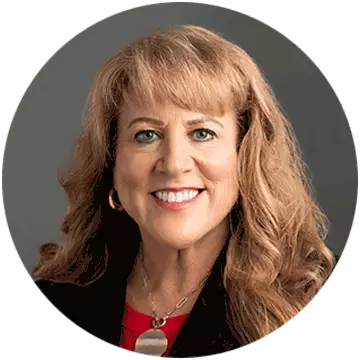What is cognitive learning theory?
This article was updated on April 8, 2024.

Written by Michael Feder

Reviewed by Pamela M. Roggeman, EdD, Dean, College of Education

Combining classroom experience, teaching pedagogy and psychological concepts, educators can optimize the way they teach and apply the necessary principles for each group. For instance, principles of adult learning can help guide professors, while other learning theories may be better suited for elementary learners. Cognitivism is one of those theories.
Basics of cognitive learning theory
Cognitive learning theory reflects how a person receives, organizes, stores and retrieves information. Cognitive learning has applications for teaching young students and adult learners picking up new skills on the job.
For educators, understanding cognitive learning theory can help them effectively plan curriculum and instruction. For everyone else, the theory’s principles are helpful for understanding how the mind works and how to learn more effectively.
At the center of cognitive learning theory sits the concept of cognition, which Britannica.com defines as “all conscious and unconscious processes by which knowledge is accumulated, such as perceiving, recognizing, conceiving and reasoning.”
“Knowledge,” as understood by cognitive theorists, is the cognitive processing of what something is and what something is not, from concepts as simple as a young student identifying animals from a picture book to something more complex such as weighing the pros and cons of eating meat.
Psychologist Jean Piaget developed the first cognitive psychology theories in the 1930s from his work with infants and young children. Behaviorism, which was the prevailing psychological theory at the time, focused solely on behaviors that could be observed externally. Behaviorists argued that this was a result of a subject’s interaction with external events and actions.
Piaget’s work is also associated with the constructivist learning theory, which shares many concepts with cognitive learning. They both focus on the internal processes associated with learning and how individuals acquire knowledge, as opposed to outwardly observable behavior.
What’s the difference between cognitivism and constructivism?
While constructivists emphasize learners actively participating in building knowledge, for cognitivists, active participation is not necessarily important. Much of the knowledge-building process happens passively in the cognitive learning theory, emphasizing processes like memory and perception. For constructivists, learners build their sense of understanding the world around them through social interactions and experiences. In practice, cognitivists are not as eager as constructivists to discard lectures and textbooks in favor of more participatory teaching methods. Both theories changed the way educators thought about learning environments and assessment strategies.
Accommodation and assimilation in cognitive psychology
Accommodation is the act of taking existing ideas and concepts and crafting them into new and different ones. Assimilation is taking new ideas and concepts and using them alongside older ideas.
Piaget saw human development as a multistage process of building knowledge. From their first breath, infants learn basic motor functions, like learning to grasp objects. By adulthood, these functions are essentially second nature and people can grapple with concepts that are very complex, like philosophy or mathematics.
To make a consistent psychological theory, Piaget sought to break knowledge (no matter how simple or complex) into a single, basic unit. From there, he could develop a theory of cognitive learning that could apply just as much to a baby’s first step to deep philosophical concepts they might develop later in life. Piaget called this basic unit schema.
What are schemata?
Piaget describes schema as “a cohesive, repeatable action sequence possessing component actions that are tightly interconnected and governed by a core meaning.”
Let’s break this down with a simple example: A child recognizes a cow on a farm.
The “cohesive, repeatable action” is the child’s recognition of the cow. It is repeatable in that that the child will continue to recognize it (and animals identical to it) as a cow.
This action of recognition can be broken down into its components: The child doesn’t just see a cow. They see a thing that is alive, has four legs, is eating grass and moos. These acts of recognition, of course, can be broken down further. The child must have some concept of what a live thing is, how to count to four and so on.
For the child, these observations form the “core meaning” of a cow. From Piaget’s perspective, the child will continue to have an enduring cognitive schema and idea of what a cow looks like in comparison to other animals.
That is a basic example, but Piaget argues that schemata essentially form the basis of every human cognitive process. According to Britannica, they are:
- Perceiving
- Recognizing
- Conceiving
- Reasoning
Over the course of human development, people form new and more complex schemata, which build off other schemata. This is how we get from ideas as simple as recognizing a cow all the way to concepts as complex as, “Do cows recognize me?”
Another example: When a student learns about addition and subtraction, the student is able to take that knowledge and use it to develop a budget to save money for a new toy.
According to some cognitivists, schemata form the basis of those and all other concepts. How are schemata formed? Piaget outlines a four-step process in the formation of schemata:
- Assimilation
- Disequilibrium
- Accommodation
- Equilibrium
Assimilation
Assimilation is the cognitive process of associating new information to what is already known. This prior knowledge can be innate, like knowing how to breathe, or something learned previously.
Disequilibrium
Disequilibrium refers to a state of discomfort that occurs when an individual encounters new information that does not fit into their existing schemata, or ways of understanding the world. In the example of a child learning what to associate with a cow, a child may see an animal with four legs and white fur that “baas” and think it is a cow, when it is in fact a sheep.
Accomodation
The child will attempt to resolve this disequilibrium through a process called “accommodation.” They will compare and contrast their concept of a cow with the mystery animal currently in front of them.
This might prompt the child to turn to a parent or caregiver, who will tell them that it’s a sheep. Subconsciously, the child will do two things at this point, both of which are components of accommodation. First, they will adjust their existing cow-recognizing schema to be able to recognize cows as not sheep. Then they will produce a new schema to recognize sheep by their specific attributes, and not by the attributes of a cow.
Equilibrium
By the end of this accommodation process, the child is equipped with a stable understanding of what a cow is and is not, as well as what a sheep is and is not. Upon seeing either of these animals, they will not need to readjust their schema.
That is, unless they encounter new information that causes disequilibrium and the whole process to begin again. In this way, schema-building is a constant, cyclical and lifelong process.
Cognitive learning theory in education
Now that we know about cognitive learning theory, we can look at cognitive learning theory in education and how it applies to working with students. It's applied in the classroom in many ways. From understanding how a particular student processes information, to helping students memorize key concepts, or even working on their problem-solving skills, there are several implications for educators. When educators take their students’ existing knowledge into account, they can better support each student’s individual learning journey. In each application, the main principle is incorporating student experiences, perspectives and knowledge.
For example, a teacher might:
- Ask students about their experience with the lesson
- Emphasize the connection between past ideas and new ones
- Incorporate group discussions and Q&A sessions into the curriculum
- Invite a variety of opinions about a given subject
This approach can not only help students learn, but it can also help them feel respected, seen and heard. That can make class more exciting and encourage a passion for learning that continues throughout students’ lives. Ultimately, cognitive learning theory helps educators incorporate strategies that align with how young people learn by being aware of the mental processes that need to take place for those “aha” moments to occur.
Learn more about cognitive learning theory
If you're a current or aspiring educator, you can learn more about a variety of learning theories, like cognitive learning theory, at University of Phoenix.
Take a look at our education degrees in early childhood education or our advanced degrees in curriculum and instruction.

Pamela Roggeman, EdD
Dean, College of Education
"In education, we talk about the concept of cognitivism by using the term ‘meta-cognition,’ meaning that we teach students how to notice their thoughts and feelings about learning in order to help students identify their thoughts, feelings and needs about what they are learning."

ABOUT THE AUTHOR
A graduate of Johns Hopkins University and its Writing Seminars program and winner of the Stephen A. Dixon Literary Prize, Michael Feder brings an eye for detail and a passion for research to every article he writes. His academic and professional background includes experience in marketing, content development, script writing and SEO. Today, he works as a multimedia specialist at University of Phoenix where he covers a variety of topics ranging from healthcare to IT.

ABOUT THE REVIEWER
As dean of the University of Phoenix College of Education, Pamela Roggeman has spent over a decade in higher education teacher preparation in both the public and private sector. Her experience has included national partnerships that help to advance thought leadership in the field of education. Dr. Roggeman also serves as the President of the Arizona Educational Foundation’s Board of Directors.
This article has been vetted by University of Phoenix's editorial advisory committee.
Read more about our editorial process.



